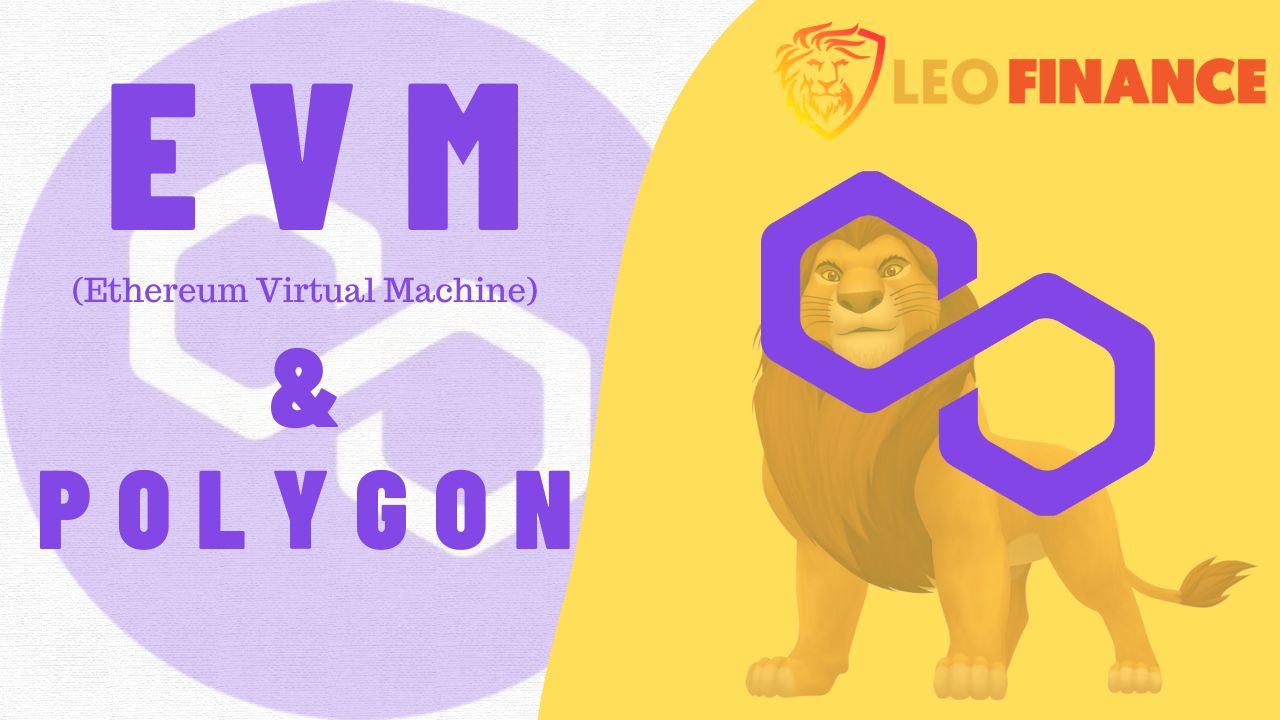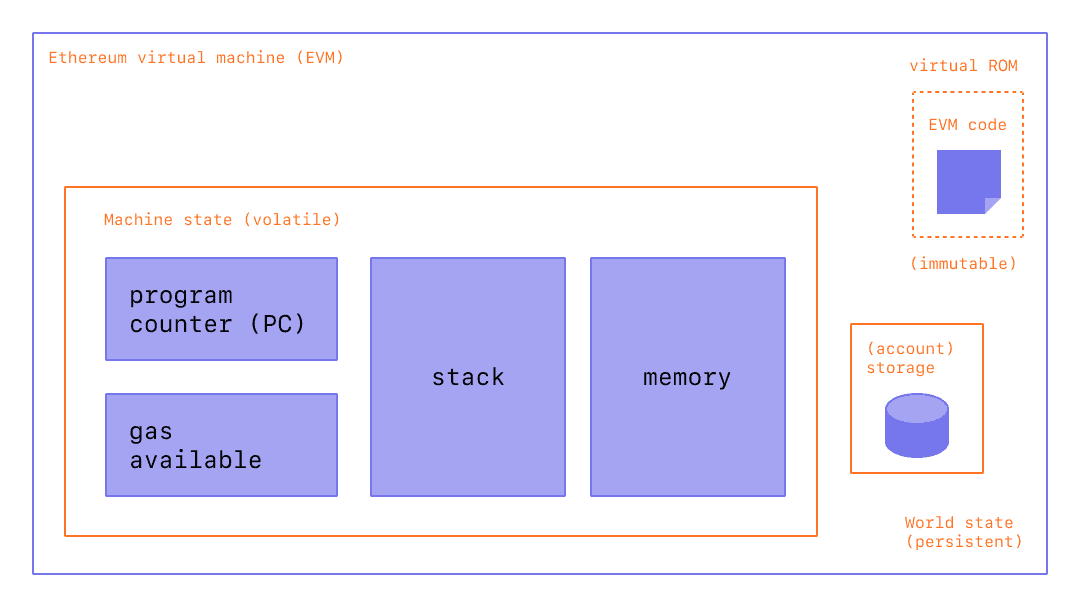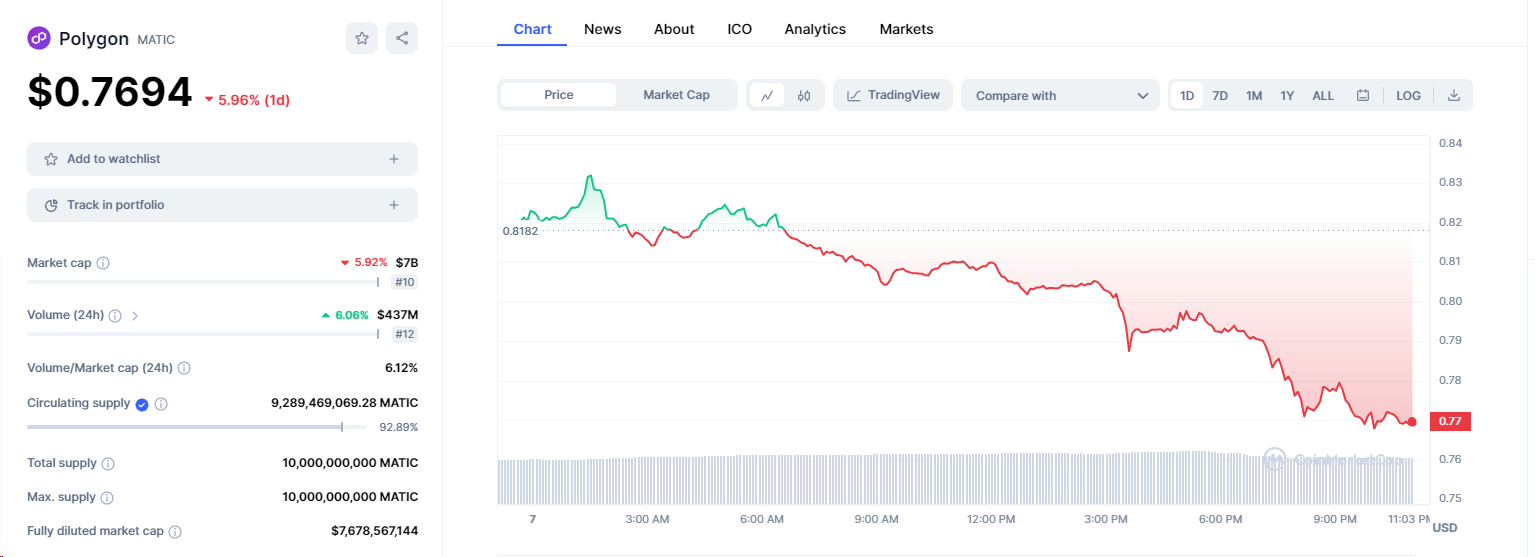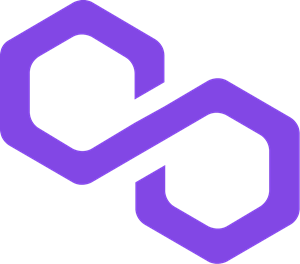

[Made in Canva by me](https://www.canva.com/)
### Hello Lions,
I hope you're all doing well and if you are participating this the ongoing leofinance adoption campaign then I wish you all the best. Also, please remember that only 3 days left before this campaign ends, so if you're participating in the Leofinance adoption campaign, I wish you the best of luck and don't forget to enter as many quests as possible before the time runs out. As for me, I am currently holding the 8th position with 75k+ XP points and trying my best to hold myself among the top 10 positions. Anyways, today we'll be diving into the fascinating world of EVM (Ethereum Virtual Machine) and Polygon, a blockchain platform that utilizes this technology.
### What is Ethereum Virtual Machine (EVM)?
The [Ethereum Virtual Machine (EVM)](https://leofinance.io/posts/@leoglossary/leoglossary-ethereum-virtual-machine-evm) is a runtime environment originally associated with the [Ethereum](https://leofinance.io/posts/@crypto-guides/what-is-ethereum-eth) blockchain but later on, it has been adopted by other [blockchain](https://leofinance.io/posts/@leoglossary/blockchain) platforms as well. Its versatility goes beyond its initial implementation which certainly showcases its flexibility. The EVM plays a significant role in the Ethereum ecosystem and also other compatible blockchains as it serves as a virtual machine that executes self-executing agreement codes known as [smart contracts](https://leofinance.io/posts/@leoglossary/leoglossary-smart-contract). These contracts have predefined conditions and outcomes that help users to run them automatically. By providing a secure and consistent environment for executing smart contracts, the EVM ensures the integrity of the [network](https://leofinance.io/posts/@leoglossary/leoglossary-network) nodes involved.
---

[image source](https://ethereum.org/en/developers/docs/evm/)
---
Ethereum's vision of becoming a "world computer" or "[internet](https://leofinance.io/posts/@leoglossary/leoglossary-internet) computer" relies on the Ethereum Virtual Machine (EVM) as it is made in such a way to serve as a [decentralized](https://leofinance.io/posts/@leoglossary/leoglossary-decentralization) computational engine embedded within each [node](https://leofinance.io/posts/@leoglossary/leoglossary-node) in the Ethereum network and the [Consensus](https://leofinance.io/posts/@leoglossary/leoglossary-consensus) across the whole blockchain also depends on the EVM which makes it an essential component of that particular blockchain system. The primary function of the EVM is to execute and deploy smart contracts and act as a facilitator for their functionality. Smart contracts are typically written in high-level programming languages like Solidity and The EVM provides them with a dedicated runtime environment specifically designed to provide an optimal environment. It operates as a Turing complete virtual machine which ensures that code is executed precisely as it should be. With countless executable projects on a chain, the EVM enhances the capabilities of the blockchain and forms the core of Ethereum's operational structure. In short, the EVM serves as a decentralized master computer that is capable of performing various programmable tasks on the blockchain.
### How EVM operates
The EVM operates using a stack-based machine that stores and processes information using a stack data structure. Smart contracts are used to be written in high-level languages like Solidity and are compiled into EVM bytecode, which is a low-level instruction set that the EVM can interpret and execute. By supporting multiple blockchains, the EVM enables the execution of [decentralized applications (DApps)](https://leofinance.io/posts/@leoglossary/leoglossary-decentralized-applications-dapps) and facilitates the transfer of value across different platforms. Its ability to operate independently within a secure environment ensures the integrity of each contract in that chain which helps to prevent any interference with other contracts or the underlying network. The EVM's popularity is evident as it has secured the top choice for most smart contract developers and this popularity is reflected in the increasing number of decentralized applications (dApps) on Ethereum and [Layer 2](https://leofinance.io/posts/@leoglossary/leoglossary-layer-2) solutions.
However, it is surprising to discover that numerous dApps on different EVMs are essentially replicas or [forks](https://leofinance.io/posts/@leoglossary/leoglossary-fork). For example, [decentralized exchanges (DEXs)](https://leofinance.io/posts/@leoglossary/leoglossary-decentralized-exchange-dex) like [Uniswap](https://leofinance.io/posts/@leoglossary/leoglossary-the-uniswap-company) or Sushiswap and lending/borrowing protocols like Aave have multiple versions across various EVMs. While these forks offer valuable benefits - such as lower [transaction](https://leofinance.io/posts/@leoglossary/leoglossary-transaction) costs on certain EVMs, they also fragment [liquidity](https://leofinance.io/posts/@leoglossary/leoglossary-liquidity) across different iterations of the same dApp. However, maintaining each of the forked applications makes the case complex for deploying across multiple chains. As the blockchain and Web3 application space is ever evolving, especially in the decentralized finance (DeFi) sector, we can anticipate the consolidation of applications into a single instance or a few instances that seamlessly interoperate with other ecosystems. This consolidation will improve efficiency and harmony within the ecosystem, simplifying user experiences and streamlining developer efforts. In the future, we can expect specialized EVMs tailored to specific application types, such as [DeFi (Decentralized Finance)](https://leofinance.io/posts/@leoglossary/leoglossary-decentralized-finance-defi), ReFi (Regenerative Finance) and infrastructure. As these applications continue to evolve, some may mature and migrate to their dedicated blockchains known as appchains. An example of such a blockchain is Cosmos, often referred to as the "blockchain of blockchains." Within the Cosmos ecosystem, the decentralized derivatives exchange dYdX is already building its appchain, allowing developers to have greater control over the platform's technology stack. So, It wouldn't be a surprise to see other Ethereum-native applications making similar moves in the near future.
### EVM compatibility
EVM compatibility is a crucial factor to consider. These platforms function as smart contract networks, processing transactions and data similarly to Ethereum. Users can build decentralized applications (DApps) on these platforms, just as they would on Ethereum. Additionally, ICOs, NFTs, and [ERC20](https://leofinance.io/posts/@leoglossary/leoglossary-erc-20) tokens can move seamlessly between different EVM networks through cross-chain bridges. The distinguishing factors lie in the improved speed and reduced transaction costs offered by these EVM-based blockchains. They can handle thousands of transactions per second and offer relatively lower fees than on the ETH chain. Some networks introduce unique features like private transaction mechanisms and support for a broader range of programming languages, expanding beyond what Ethereum provides.
Apart from these competitive features, EVM-compatible blockchains resemble Ethereum in terms of design, smart contract functionality, and available features. They provide a familiar block explorer experience similar to Etherscan, making it user-friendly for existing Ethereum users. Moreover, they support a wide range of stablecoins such as USDT, USDC, DAI, and BUSD, along with NFTs and various pegged tokens usable across different DeFi applications. The combination of these features, along with lower gas fees and faster transaction times found on EVM-compatible blockchains, has attracted a diverse user base, contributing to the success of DeFi.
## Example
For example, here are some of the popular EVM Networks - Ethereum Classic, Telos EVM Mainnet, CoinEx Smart Chain, Zyx Mainnet, Binance Smart Chain, EOS Mainnet, Optimistic Ethereum, xDAI Chain, Polygon Mainnet (Matic Network) and Arbitrum One etc.
Now, let us look at the polygon network as an example that uses EVM to operate to understand more about this topic.
### What is Polygon and why was it developed??
[Polygon](https://leofinance.io/posts/@crypto-guides/what-is-polygon-matic-crypto) is a comparatively newer blockchain that was originally known as Matic Network. This platform was created to address the challenges of scalability and usability faced by the Ethereum network. Its goal is to provide a more efficient and user-friendly ecosystem for decentralized applications (DApps) and blockchain developers. It offers a range of Layer 2 scaling solutions which includes Optimistic Rollups and zkRollups in order to enable faster transactions, lower fees and increased scalability. Polygon goes beyond being a single solution and aims to create an interconnected network of Ethereum-compatible chains and thus allowing its users for seamless asset transfers and interoperability. With products like the Polygon SDK (Software Development Kit) and the Polygon mainnet, it provides developers with easy and user-friendly tools to build on its platform. The vibrant ecosystem of Polygon attracts projects and decentralized finance (DeFi) applications and thus contributing to its growth and innovation. Overall, Polygon is focused on enhancing the Ethereum ecosystem, making it easier for developers to create decentralized applications efficiently.

[image source](https://www.coinnews.fr/plus-de-37-000-dapps-executees-sur-polygon/)
MATIC token details:
MATIC Circulating Supply: 6,330,554,997
MATIC Total Supply: 10,000,000,000
MATIC Max Supply: 10,000,000,000
---
### Founders of Polygon
It's an honor for me to acknowledge that this technology was founded in my country India and by three Indian-origin co-founders: Jaynti Kanani, Sandeep Nailwal, and Anurag Arjun. They launched Polygon (formerly known as Matic Network) in 2017 with the aim of addressing the scalability and usability issues faced by the Ethereum network. The co-founders have extensive experience in blockchain technology and have played a very important role in the development and growth of Polygon.
### How does the EVM work on the Polygon chain?
The Polygon chain utilizes the Ethereum Virtual Machine (EVM) as its execution environment and it is fully compatible with the Ethereum network, allowing for seamless migration of DApps and smart contracts from Ethereum to Polygon. Within the Polygon network, the EVM serves the same glorious purpose as the runtime environment for executing smart contracts and processing transactions. It provides a secure and isolated environment for the decentralized execution of code. By leveraging the EVM, developers can build and deploy their dApps and smart contracts on the Polygon chain while taking advantage of the scalability improvements offered by the Layer 2 solution. The EVM ensures compatibility and consistency between Ethereum and Polygon and enables the exchange and use of data and information and smooth asset and data transfers between the two networks.
In summary, Polygon was developed to address Ethereum's scalability challenges by offering a Layer 2 scaling solution. The EVM plays a vital role in the Polygon network, providing a compatible execution environment for DApps and smart contracts, and facilitating seamless interoperability with the Ethereum ecosystem.

[image source](https://coinmarketcap.com/currencies/polygon/)
### Advantages of Polygon compared to Ethereum
* `Enhanced Scalability` Polygon improves Ethereum's scalability limitations on a higher level by increasing its transaction processing capacity significantly. The Layer 2 scaling solution of Polygon allows its users for higher throughput and improved scalability which becomes very crucial for handling network congestion and growing demand.
* `Lower Transaction Fees` Polygon offers reduced transaction fees compared to the Ethereum chain which become a headache for most of us. This cost-effectiveness is made possible by optimized infrastructure and efficient consensus mechanisms employed within the Polygon network which resulted in providing its users and developers with more affordable interactions with DApps and asset transfers.
* `Faster Confirmation Times` Polygon achieves faster confirmation times for transactions and smart contracts compared to Ethereum. Its Layer 2 scaling solution optimizes the consensus process and enables a quicker validation and confirmation of transactions. This vital improvement in terms of speed enhances the user experience and facilitates the seamless execution of time-sensitive operations.
* `Seamless Interoperability` Polygon also maintains full compatibility with Ethereum which ensures a seamless operating environment between the two networks. DApps and smart contracts built on Ethereum can be easily migrated to Polygon which certainly enables the developers to leverage the Polygon's scalability while retaining access to the broader Ethereum ecosystem. No doubt that it promotes cross-chain functionality and asset transferability by facilitating efficient resource utilization across different networks.
* `Diverse Ecosystem` Polygon has also constructed a vibrant ecosystem that encompasses various protocols, decentralized exchanges and decentralized finance (DeFi) applications. This amazing diversity provides the developers with a wider range of tools, services and infrastructure to support their projects which further contribute to the growth and development of the Polygon network.
* `Developer-Friendly Environment` Last but not least, Polygon offers a developer-friendly environment that simplifies the creation and deployment of DApps. It provides extensive documentation, developer tools, and frameworks that really help enable an efficient development process. The ecosystem encourages innovation and collaboration and that's why it is attracting developers to build on Polygon and contribute to its expanding ecosystem.

[image source](https://seeklogo.com/vector-logo/398528/polygon-matic)
### Polygon and Matic
Many of us get confused with the names Polygon and Matic so let me clarify here. Actually, Matic Network rebranded itself as Polygon to become a comprehensive framework for Ethereum-compatible blockchain networks while going beyond a single Layer 2 scaling solution. While Matic primarily was focused on scaling Ethereum using Plasma technology, Polygon at a later stage expanded to support multiple Layer 2 solutions like Optimistic Rollups and zkRollups and thus giving its developers more options to work with. Polygon aims to create an interconnected ecosystem by allowing developers to build and connect Ethereum-compatible chains and enables a seamless environment for asset transfers and interoperability. It offers various products and tools, including the popular Polygon SDK among developers for creating chains and DApps and also the Polygon PoS chain which improves scalability and security at lower cost. In summary, Matic was the original project for Ethereum scaling, while Polygon represents a broader framework with diverse scaling solutions, interoperability, and developer-friendly products.
### Conclusion
In conclusion, I would say that the Polygon offers us a better environment with significant advantages over Ethereum including enhanced scalability, lower transaction fees, faster confirmation times, seamless interoperability, a diverse ecosystem and a developer-friendly environment. These advantages make Polygon an appealing choice for developers and users seeking improved scalability and usability in the blockchain space.
`Polygon Whitepaper` - https://whitepaper.io/coin/polygon
**Resources I used to gather information**
* https://ethereum.org/en/developers/docs/evm/
* https://www.coindesk.com/
* https://www.publish0x.com/
* https://coinguides.org/
---
I hope you liked reading my post about EVM and polygon and if you have learned something new today, I will be very happy to know. Let me know your thoughts and feeling in the comment below and I will be seeing you all in my next post!
---
Posted Using [LeoFinance Alpha](https://leofinance.io/@mango-juice/exploring-evm-and-polygon-unveiling-the-power-of-evm-in-blockchain-technology)
 hiveblocks
hiveblocks